Ten villages to visit in the Marche region
Ten villages to visit in the Marche region
1. Loreto
It is one of the main pilgrimage destinations of the Catholic world, because here is the Basilica of the Holy House, or the imposing church built around what is believed to have been the house of the Virgin Mary: according to legend, it was flown by angels from Nazareth to Loreto. We actually have no idea how this house got here: it was probably a real Palestinian house disassembled and then transported to the area, but we do not know for sure who brought it there. The fact remains that it was a popular pilgrimage destination since the 15th century: in fact, the construction of the basilica dates back to 1468, to be finished in the 17th century and completed by the bell tower (designed by Luigi Vanvitelli) in 1755. Great architects (Bramante, Giuliano da Sangallo, Antonio da Sangallo the Younger, Andrea Sansovino) and artists worked on the basilica (Melozzo da Forlì, Luca Signorelli, Federico Zuccari, Cristoforo Roncalli worked on it), while the Apostolic Palace houses the Sanctuary Museum, with works by great artists (masterpieces by Lorenzo Lotto are also found there: Loreto is, in the Marche region, the city with the highest number of works by the Venetian painter). In the center of the basilica square stands the Fontana Maggiore, a masterpiece by Carlo Maderno, while not far away stands the monument to Pope Sixtus V. Other important monuments include the Renaissance-era Municipal Palace, the Aqueduct of the Arches commissioned by Pope Paul V, and the imposing city walls that are among the best preserved in the region.
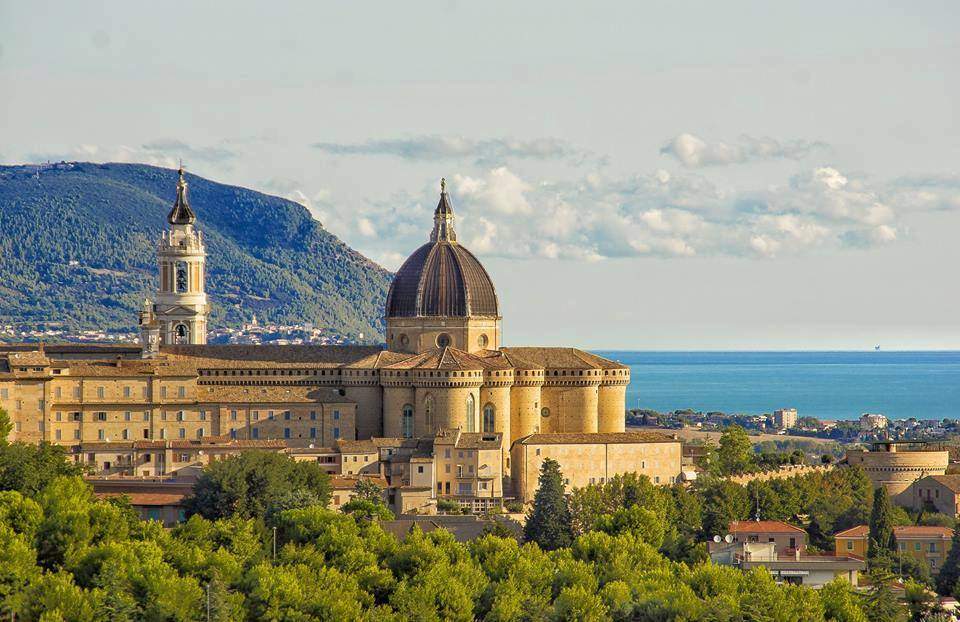 |
| View of Loreto |
2. Jesi
It is a modern city of forty thousand inhabitants not far from the capital Ancona, of centuries-old industrial tradition, but its historic center is a town of ancient origins, best known for being the birthplace of Frederick II. Inhabited perhaps already by the Umbrians, it was the Roman Aesis: it was then occupied by the Ostrogoths, then by the Lombards, and then became part of the Church State, to which it remained linked until the Unification of Italy. The Palazzo della Signoria was las ede of the city’s magistracies, while religious life took place around the Duomo, which we see today in its 18th-century appearance, inspired by the Sanctuary of the Holy House of Loreto. The Gothic church of San Marco preserves 14th-century frescoes, while the oldest house of worship in Jesi is the church of San Nicolò, attested from the 12th century. Also worth seeing are the city walls, among the best preserved in the region, and the museums: the Pinacoteca Civica preserves many works by great artists, including five fundamental masterpieces by Lorenzo Lotto. Other institutions include the Civic Archaeological Museum, the Diocesan Museum, and the Frederick II Museum.
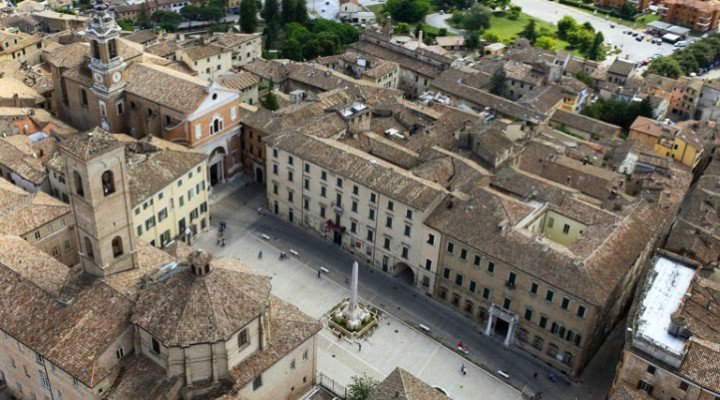 |
| Jesi, the central Piazza Federico II from above |
3. Gradara
The village of Gradara evokes Renaissance suggestions, since it was at the center of the disputes between the Malatesta and Montefeltro families: its strategic position, from which the sea and the surrounding hills could be controlled, made it a particularly ancient location. Gradara developed around its famous castle, built by the De Griffo family in the 12th century and then enlarged by the Malatesta. The story of Paolo and Francesca recounted by Dante Alighieri in his Commedia took place here. Gradara still retains its appearance as a fortified medieval village, which is why it attracts many travelers who leave the Romagna coast to arrive here, in one of the first towns in the Marche region that one encounters coming down from Romagna.
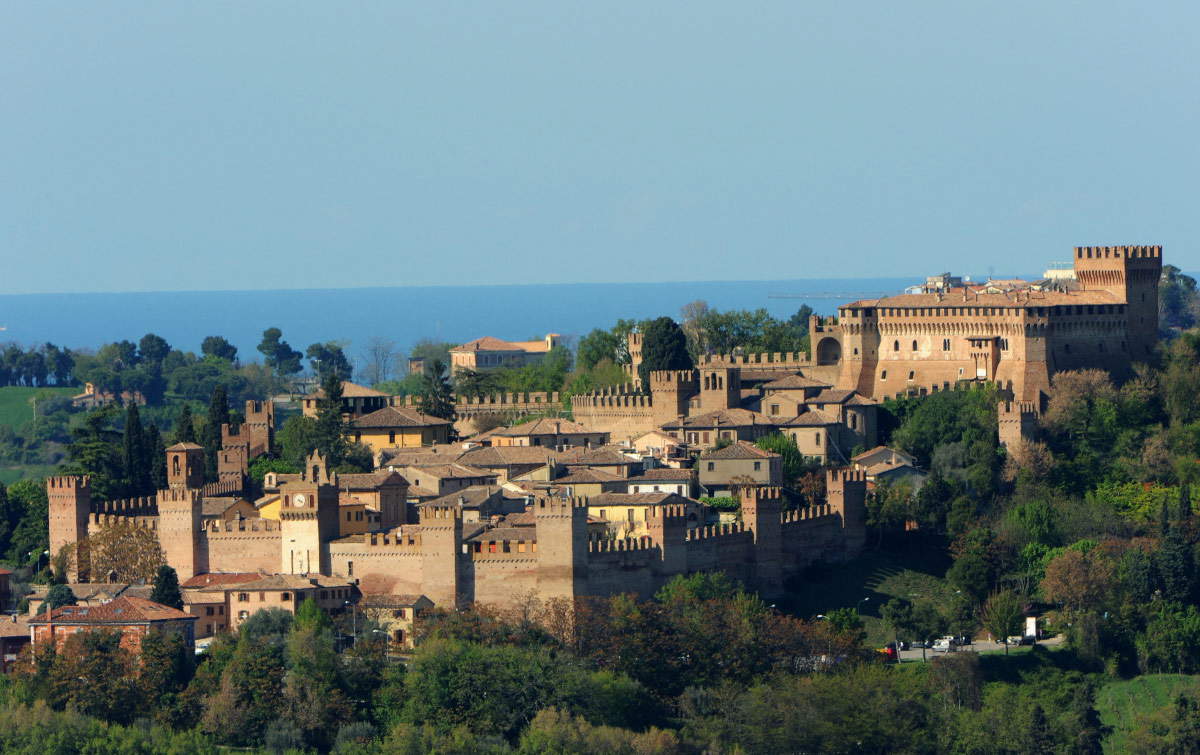 |
| View of Gradara |
4. Sassoferrato
It is located in the Apennines, on the slopes of Mount Strega, and was founded in the Middle Ages by the Counts Atti: in documents it is mentioned as Saxum Ferratum, probably in reference to the might of their fortification. The village is dominated by the massive bulk of the Albornoz Fortress, erected in 1365 by the papal legate Egidio Albornoz, with the money raised from the sale of property confiscated precisely from the Atti. Also of considerable interest are the church of San Pietro, which is in its late Baroque appearance and preserves some works by the village’s greatest artist, Giovanni Battista Salvi known as “il Sassoferrato,” the Romanesque-Gothic church of San Francesco (there are frescoes from the 14th and 15th centuries), the 14th-century Palazzo dei Priori, where the Museo Civico Archeologico and the Perottiana Collection are located, and also the church, sanctuary and convent of Santa Chiara, where other works by Sassoferrato are preserved.
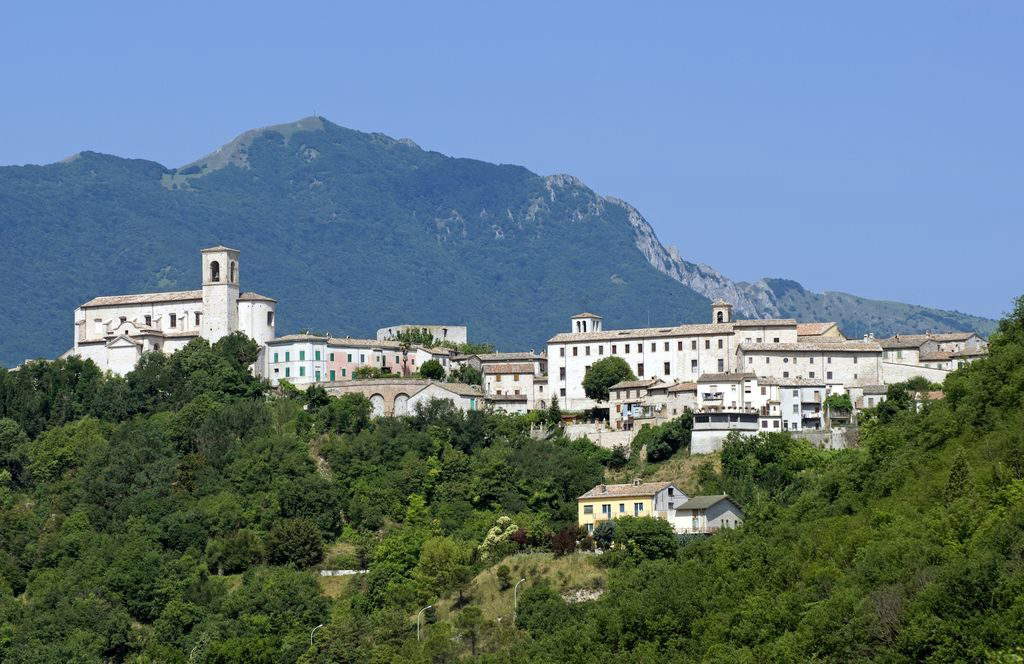 |
| View of Sassoferrato |
5. Offida
The origins of this town in the province of Ascoli Piceno are unknown: the earliest historical records are from the 11th century, but Offida was probably founded much earlier. It is known as a town of lace, the town’s signature activity. A visit to its historic center, enclosed within the 15th-century walls, can begin from the central and very orderly Piazza del Popolo, where the Palazzo Comunale, built between the 13th and 14th centuries, is located, and which is currently home to the Pinacoteca Civica and a Municipal Archive where a collection of 14th-century parchments is preserved. Also 14th-century is the church of Santa Maria della Rocca, the main one in the village, and from the same period is the shrine of St. Augustine. By contrast, the imposing Collegiate Church, built to a design by Ticino-born Pietro Maggi, is eighteenth-century. Offida is also known for its Carnival, which begins each year on January 17 and ends on Ash Wednesday: typical of the Carnival of Offida is, on the evening of the last Friday of the festival, the hunt for “Lu bov fint” (“the fake ox”), a fake ox that is paraded through the town and finally symbolically killed, and the parade of “vlurd” (fiery beams) carried around the town on Shrove Tuesday.
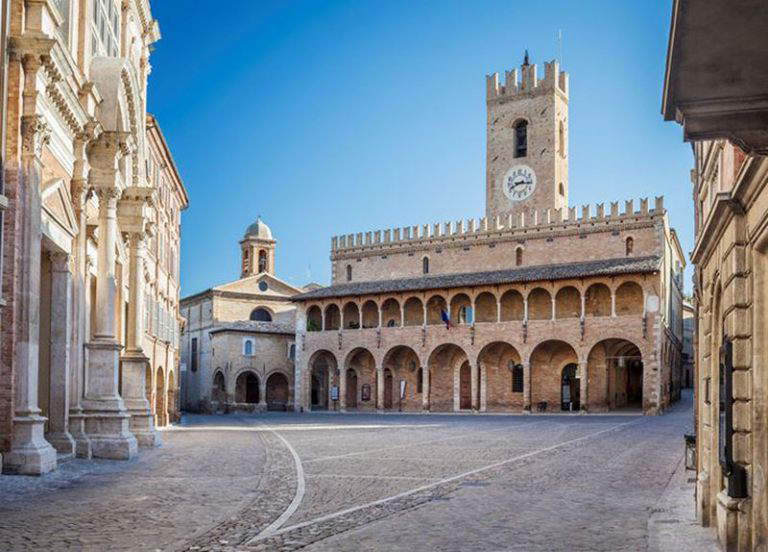 |
| Offida, Piazza del Popolo |
6. Grottammare
The area of Grottammare has been inhabited since prehistoric times, but the town did not develop until the Middle Ages, while the fortified walls, necessary to protect the seaside town from pirate raids, date back to the 16th century (in 1525 itself, Grottammare had suffered a heavy attack). The birthplace of Pope Sixtus V, born in Grottammare in 1521, it develops around Peretti Square, dedicated precisely to the pontiff, born Felice Peretti: here stand some of the town’s most important buildings, such as the church of St. John the Baptist (inside is the Sistine Museum, which tells the pope’s story), the Palazzo dei Priori and the 18th-century Teatro dell’Arancio, while not far away are the ruins of the medieval castle and the church of Santa Lucia, built at the behest of Sixtus V. The historic center does not overlook the sea, but the Adriatic is a short distance away: in modern times, however, Grottammare also developed on the coast, and today its marina is a lively seaside resort.
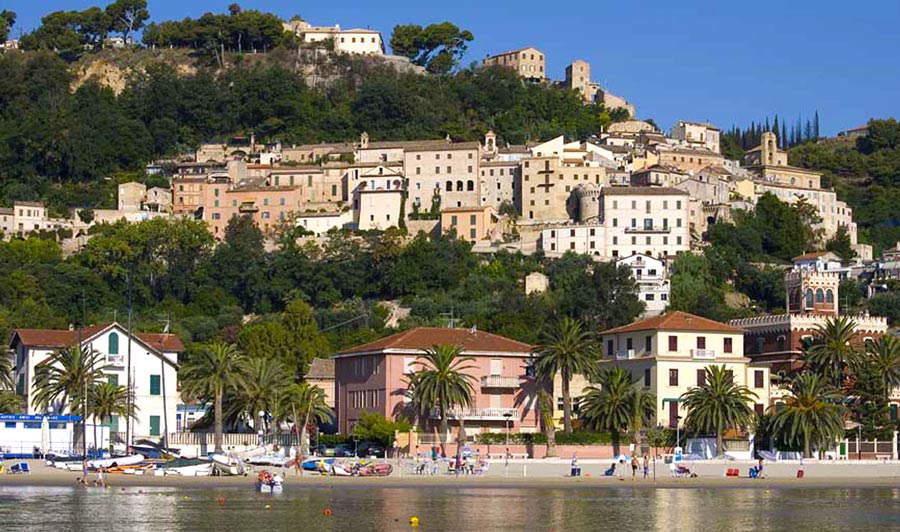 |
| View of Grottammare |
7. Pergola
The origins of Pergola are disputed, for some think it was born in 1234 (this the earliest certain attestation), while some believe it has very ancient origins. It was in ancient times subject to the rule of the Duchy of Urbino, and was annexed to the Papal States when, in 1631, Urbino also became part of the papal territories. Pergola is universally known for the Golden Bronzes (so much so that it is also known as “the city of golden bronzes”), a bronze statuary group from the Roman era found in 1946 near the village by two farmers. They are rare and relatively well-preserved statues, and the Museum of the Gilded Bronzes was built around them (the layout, moreover, was renovated in 2019). However, these are not the only wonders of the village: see the Duomo, which now has a neoclassical façade, Baroque interior, and Romanesque-Gothic bell tower; the ancient 12th-century church of San Giacomo; the 13th-century church of San Francesco; the Baroque churches of the Three Kings, Santa Maria delle Tinte, and San Biagio; the Rocca; and the Palazzo Comunale.
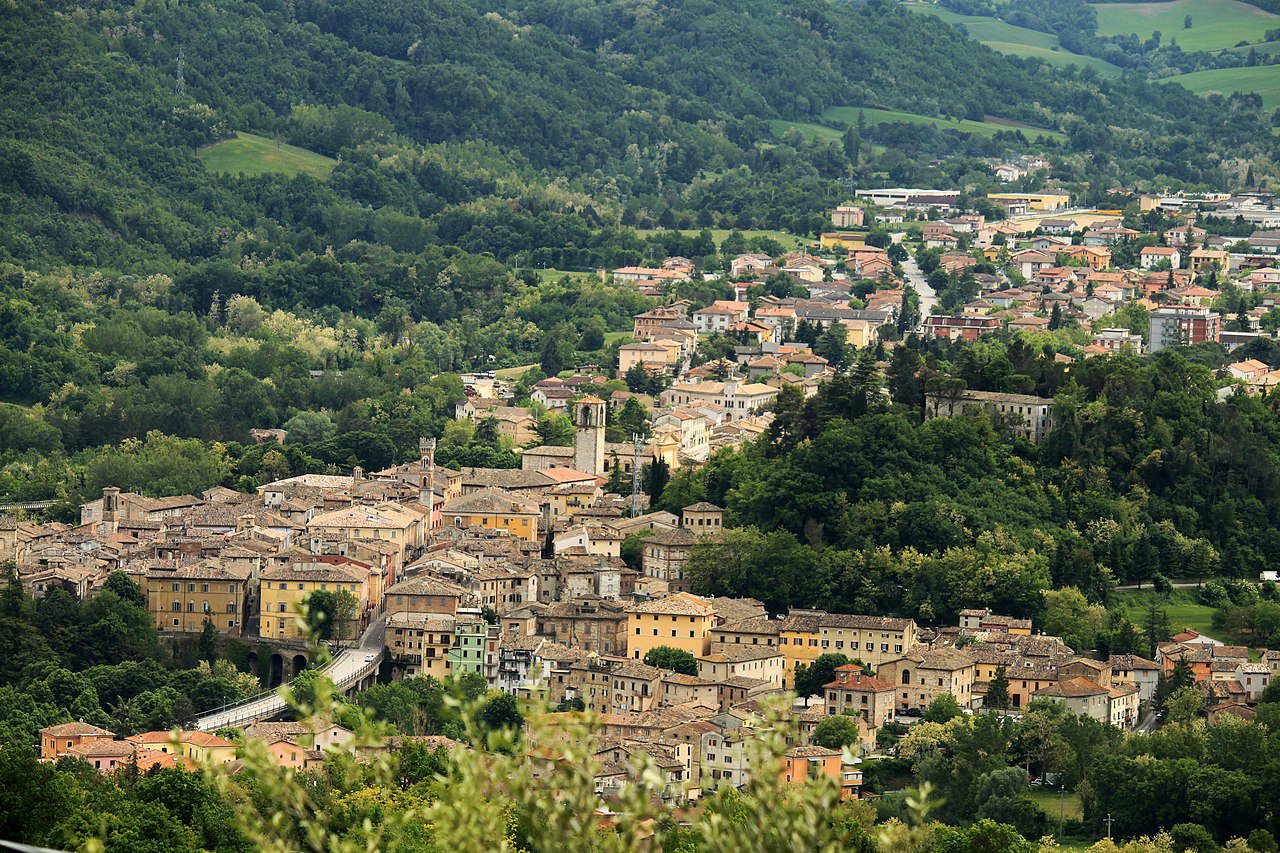 |
| View of Pergola. Ph. Credit |
8. Cingoli
A village located on the summit of Mount Circe, it is known as “the balcony of Marche” for its beautiful panoramic position among the hills of the province of Ancona. Of Roman origin (it is ancient Cingulum), it was a free commune before becoming part of the Papal State. One of Lorenzo Lotto’s masterpieces, the imposing Madonna del Rosario, is preserved in the local church of San Domenico, while the main building of worship is the collegiate church of Sant’Esuperanzio, dating from the 13th century: inside there are frescoes dating from various periods between the 14th and 16th centuries and painted by Antonio Solario and Arcangelo di Cola, among others. The church of San Filippo Neri is one of the most scenic in the region, thanks to the sumptuously decorated interior by Pier Simone Fanelli in the 17th century. The “tour” of monuments is completed with the Palazzo Comunale, a beautiful Renaissance building, while evidence of Cingoli’s older history can be found in the State Archaeological Museum and at the Pinacoteca Comunale.
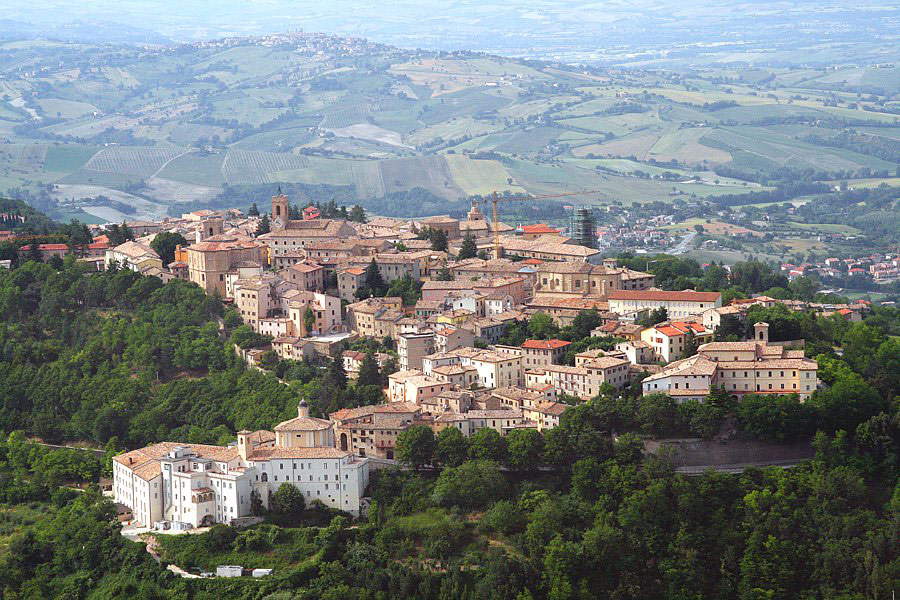 |
| View of Cingoli |
9. Montefabbri
This is a small fortified village of just 40 inhabitants, a hamlet of the municipality of Vallefoglia. Its history dates back to the Middle Ages, and Montefabbri Castle is first mentioned in 1216. It was for a long time a fief of the Montefeltro family and then passed to their heirs, the Della Rovere family, and then to the Paciotti family, who received it from the Della Rovere family in 1578. Montefabbri then came under the direct rule of the Papal States in 1744. The ancient fortress is no longer there, but there remain the walls surrounding the village, which gathers around the parish church of San Gaudenzio, one of the oldest in the area (dating back to the 11th century: the remains of St. Marcellina are kept there). The porta urbica was the ancient entrance to the medieval castle, which was accessed by means of a drawbridge (one of the facades is surmounted by the coat of arms of Francesco Paciotti, the architect who acquired the feud from the Della Rovere family and was the first count of Montefabbri).
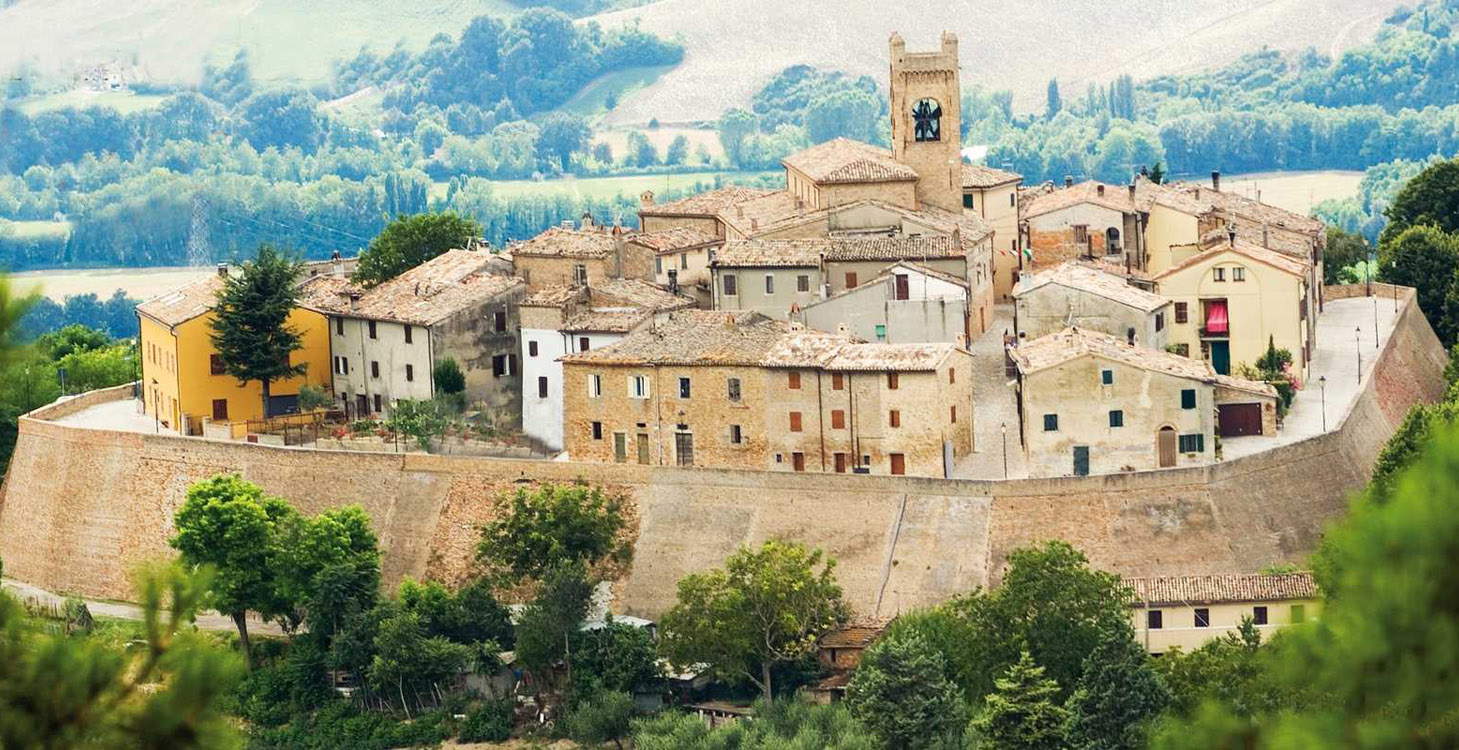 |
| View of Montefabbri |
10. San Ginesio
San Ginesio, located in the Sibillini Mountains not far from the Umbrian border, has Roman origins, but the town did not develop until the Middle Ages when, between the thirteenth and fourteenth centuries, the fortified village was built that was among the possessions of the Da Varano family, the lords of Camerino. With the fall of the latter, the town passed to the Papal States. The village gathers around the central Piazza Gentili, on which stands the distinctive Collegiate Church of Santa Maria Assunta, with its 15th-century late Gothic facade, the only one in the Marche region. Medieval (from the 14th century) are also the sandstone walls, still equipped with their towers, and earlier is the Ospedale dei Pellegrini, whose origins date back to 1295. The church of Santa Maria in Vepretis, on the other hand, is 17th-century. The Gentili Picture Gallery houses important works of art from the Marche school, including paintings by interesting local artists such as Vincenzo Pagani and Simone De Magistris.
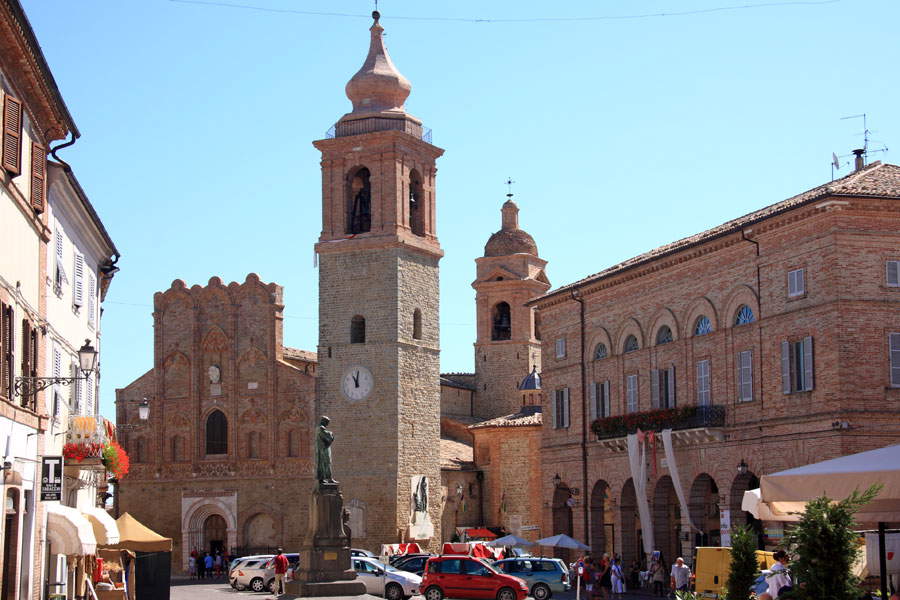 |
| San Ginesio, Gentili square. Ph. Credit Alessandro Vecchi |
 |
| Ten villages to visit in the Marche region |
Warning: the translation into English of the original Italian article was created using automatic tools. We undertake to review all articles, but we do not guarantee the total absence of inaccuracies in the translation due to the program. You can find the original by clicking on the ITA button. If you find any mistake,please contact us.


























